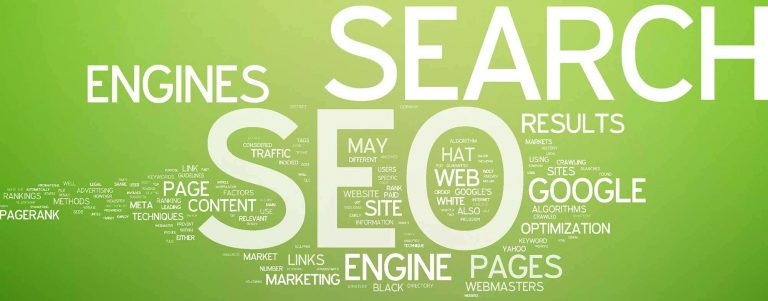How Web Design Impacts SEO: The Ultimate Guide
Welcome to our ultimate guide exploring how web design impacts SEO. In this guide, we’ll delve into the intricate relationship between web design and SEO, highlighting the key elements to consider and providing actionable tips to improve your site’s SEO through effective web design.
Search Engine Optimisation (SEO) is the practice of improving and promoting a website in order to increase the number of visitors it receives from search engines. It’s about understanding what people are searching for online, the answers they seek, and the language they’re using. Sound complicated? It doesn’t have to be!
Web design is more than just pretty images and a neat layout. It serves as the digital face of your business. An effective web design should communicate your brand message and engage your audience. But did you know it also plays a pivotal role in your SEO efforts?
Understanding SEO and Web Design
Search Engine Optimisation (SEO) is a digital marketing strategy aimed at improving a website’s visibility on search engine result pages. It involves a variety of techniques, including keyword optimisation, content marketing and link building.
Web Design, on the other hand, is the process of creating and maintaining the aesthetic and functional aspects of a website. It encompasses various aspects, including layout, colour scheme, graphics, and content placement.
How Web Design Impacts SEO
Web design significantly impacts SEO in various ways. Firstly, search engines favour websites that provide a good user experience, which is largely determined by the site’s design.
Additionally, elements like site speed, mobile-friendliness, and easy navigation, all rooted in good web design, directly influence a site’s SEO performance.
Design also effects something called ‘Google Core Web Vitals‘ and Accessibility. Accessibility refers to the experience of users who might be outside the narrow range of the “typical” user, who might access or interact with things differently than you expect.
Key Web Design Elements for SEO
Several web design elements play crucial roles in SEO:
- Mobile-Friendliness: As more people use mobile devices to access the internet, having a mobile-friendly website design is critical for SEO. Google, for instance, uses mobile-first indexing, meaning it primarily uses a site’s mobile version for ranking.
- Site Speed: Site speed is another crucial element. A slow-loading website not only frustrates users but also negatively affects SEO. Google considers page speed in its ranking algorithm.
- Easy Navigation: A well-structured site with easy navigation helps search engines crawl your site more effectively, positively impacting your site’s SEO.
- User Experience (UX): Good UX design leads to longer dwell time and lower bounce rates, both of which positively influence SEO.
Tips to Improve Web Design for SEO
Here are some actionable tips to optimise your web design for better SEO:
- Optimise for Mobile: With the increase in smartphone usage, having a mobile-friendly website is no longer an option—it’s a necessity. Google’s mobile-first indexing means that the mobile version of your website is the one that will primarily be used for ranking purposes. Ensure your website is responsive and adjusts to fit different screen sizes.
- Improve Site Speed: In our fast-paced digital world, speed is king. Websites that load quickly provide a better user experience and are rewarded by search engines with higher rankings. Ever found yourself clicking away because a page took too long to load? You’re not alone! Use tools like Google PageSpeed Insights to identify and fix any issues slowing down your site.
- Use of Multimedia: A picture is worth a thousand words, right? Well-optimised images and videos can make your content more engaging, leading to longer dwell times and better SEO performance.
- Website Architecture: A well-structured website makes it easier for search engine bots to crawl and index your site, improving your visibility on search engine results pages (SERPs).
Tips to Improve Web Design for User Experience (UX)
Here are some actionable tips to optimise your web design for better User Experience:
- Breadcrumbs: Ever noticed those little links at the top of a webpage that show you the path you’ve taken to arrive at the current page? Those are breadcrumbs, and they’re not just for Hansel and Gretel! They help both users and search engines navigate your site.
- Simplify Navigation: Make it easy for users to find what they’re looking for by organizing your site logically and providing clear navigation.
- Enhance User Experience: Prioritise user-friendly designs. Ensure your website is visually appealing, easy to use, and the content is accessible and readable.
- Content Layout: An organised layout with well-spaced content makes it easy for users to read and digest information. This can result in increased time on page and lower bounce rates—two important factors for SEO.
Avoiding Common Web Design Mistakes
Avoid overly complex designs, slow load times, and unresponsive pages. These can negatively impact your SEO and user experience. A well-designed site should be a balance between aesthetics and functionality.
Conclusion
The impact of web design on SEO is profound. From mobile-friendliness to site speed, easy navigation, and user experience, various design elements play vital roles in determining your website’s SEO performance.
By optimising these elements, you can significantly enhance your SEO, attract more visitors and convert them into customers. Remember, a well-designed website is a valuable SEO asset.
Now that you understand the importance of web design in SEO, it’s time to assess your website and make necessary changes to improve its design and, by extension, its SEO performance.
We hope this guide provides you with the insights you need to understand the intricate relationship between web design and SEO. If you have any queries or require further assistance, don’t hesitate to get in touch. Happy optimising!






